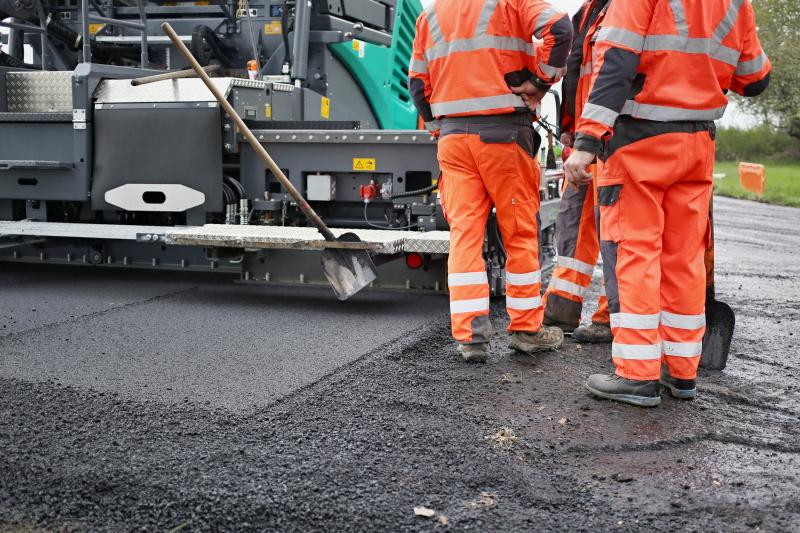Asphalt Maintenance and Repair
Asphalt services

Service information
What is it?
A pavement overlay is the application of a layer of hot bituminous paving to an existing paved road that has deteriorated because by years of wear from traffic and the environment.
When is it done?
What can be expected . . . During an overlay project, residents must remove all vehicles from the street. If curb and gutter is present the old pavement will be milled along each edge so that when the overlay is applied the surface of the new pavement is level with the gutter. The street is then sprayed with a thin layer of asphalt called a tack coat so that the new pavement will stick to the old pavement. The overlay is then applied. Traffic should be kept off the new pavement for at least four hours after it is laid.
Where do we do it?
Overlays are applied to about 35 miles of carefully selected rural roads, residential streets, and urban arterial highways each year. All paved roads are inventoried in a computer database and evaluated using specialized software. Data is then compiled from the computer, together with field inspections to determine each year's program.
Why is it done?
Mesa County's overlay program is used to restore paved road surfaces as part of routine maintenance. An overlay adds structural capacity, riding comfort and skid resistance, which add to the road's safety. Smooth road surfaces also decrease vehicle maintenance costs and improve fuel economy. Pavement overlays help reduce traffic noise, which is important in urban developments. While newly overlaid roads are aesthetically pleasing, roads are not overlaid to improve appearance.
Pavement deterioration is cumulative. Pavements generally deteriorate at an ever increasing rate. Factors including, weather, traffic impacts, frequency of maintenance, etc. all contribute to a road's longevity. The average life of a paved road in Mesa County is between 18 and 20 years (that is from the time the road is newly paved to a point where reconstruction becomes necessary).
What can be expected?
The crack filling team moves along the road controlling traffic and applying the sealer. Only slight disruptions in traffic flow should be expected.
What is it?
Crack filling is considered a high priority because it is relatively inexpensive and it provides many times its value in extending pavement life. Crack filler is an application of hot asphalt material carefully poured into cracks in the pavement. Cracks are first cleaned with a blast of compressed air to remove debris followed by the filling operation.
When do we do it?
Crack filler is applied during cooler months when pavement cracks are widest.
Why is it done?
Nearly every asphalt road experiences cracking from the expansion and contraction of the road surface. These cracks allow moisture to penetrate into the road subbase causing subsurface failures and potholes. Sealing cracks in pavement stops moisture from penetrating and prolongs the life of a road.
Once a paved road passes 75% of its service life deterioration accelerates. At that time the road is damaged beyond routine maintenance repairs and must be reconstructed. Since reconstruction costs are four to five times higher than routine maintenance every attempt is made to avoid reconstruction through routine maintenance.
What can be expected?
During a chip seal project all vehicles must be removed from the street so that there are no obstructions. The street is then swept to remove any loose debris. The chip seal process is then applied. First, a thin layer of liquid asphalt is sprayed onto the road followed by a machine that spreads a layer of small pea-sized chips of gravel onto the liquid asphalt. The street is then rolled with a compactor. Traffic is allowed back on the street within an hour of the application. After a few days the street is again swept to remove any loose chips. Depending on the amount of traffic over the next several months the street may be swept one or more times to completely remove all loose material.
What is it?
A chip seal is an application of liquid asphalt followed with small pea-size chips of gravel.
When do we do it?
A chip seal is applied during the warm summer season for best results. Chip seals are usually applied every five to eight years depending on the condition of the street.
Why is it done?
Chip seals are used to retard pavement deterioration, improve skid resistance and waterproof the old pavement. Roads identified for a chip seal are in good condition, structurally sound with no major deformations and do not require an overlay.
